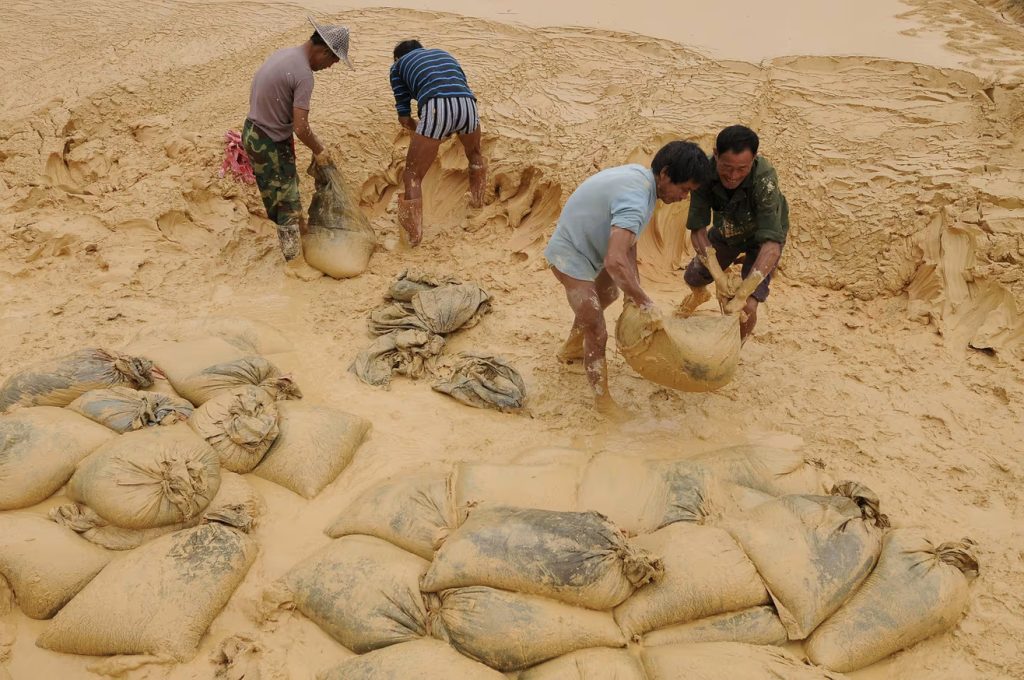As U.S. and Chinese trade negotiators meet in London this week, Washington’s top concern is whether Beijing will ease its grip on rare earth minerals—materials critical to countless modern technologies.
China holds a near-monopoly in the global rare earth supply chain, mining around 70% and refining nearly 90% of these essential elements. Rare earths are used in everything from electric vehicles and military systems to wind turbines and even car seats. In contrast, the U.S. has minimal domestic production, largely because rare earth mining is costly and environmentally destructive.
This imbalance became more urgent in April when China tightened export controls on seven rare earth metals and related magnetic materials. The move came amid rising trade tensions with President Donald Trump, sparking alarm across the global business community. Automakers, tech firms, and industry groups in the U.S., Europe, and elsewhere have warned that prolonged restrictions could disrupt manufacturing and stall production lines.
Speaking to CNBC on Monday, National Economic Council Director Kevin Hassett said U.S. officials were seeking a “handshake” agreement from Beijing to resume rare earth exports. His comments followed President Trump’s announcement that Chinese President Xi Jinping had agreed in a recent call to restart shipments—marking their first direct conversation since Trump returned to the White House.
“They were kind of releasing them,” Hassett noted, “but it was going a lot slower than some companies believed was optimal.”
Meanwhile, Chinese state media sought to reframe the issue. In an editorial published Monday, the state-run Xinhua News Agency insisted that rare earth export controls were not a short-term tactic for leverage in trade talks. Rather, they were described as a legitimate measure aimed at ensuring that these dual-use materials—used in both civilian and military applications—are not deployed in ways that threaten global security.
“Imposing export controls on strategic resources with clear dual-use characteristics is a common international practice,” the editorial stated, “and a legitimate right of sovereign nations to safeguard their own security.”
Despite the tensions, there have been recent signs of progress. On Saturday, China’s Ministry of Commerce indicated a willingness to discuss its export policies, saying it “fully considers the legitimate needs and concerns of other countries.”

“China has already approved a number of qualified applications and will continue to tighten the approval process for those that meet compliance standards,” the government said in a statement.
While Beijing has signaled openness to dialogue, analysts believe it’s unlikely to fully lift the restrictions—viewing the move instead as a calculated show of strength.
That impression has been reinforced among foreign business leaders in China, several of whom have attended briefings with officials from the Ministry of Commerce and came away convinced that Beijing is using rare earths as a strategic tool.
“We made it clear that we’re facing an immediate risk of supply chain disruptions, but we didn’t get the sense that the Chinese side shares the same sense of urgency,” an automotive industry representative involved in the talks told NBC News last week.
The European Union Chamber of Commerce in Beijing echoed similar concerns on Friday, acknowledging that although there has been “some improvement,” it hasn’t been enough to prevent major disruptions to production and logistics.
According to Jens Eskelund, president of the EU Chamber in China, a few European firms have received export approvals, but not at a scale sufficient to fully resolve the bottlenecks. “It’s not enough to eliminate the risk of significant supply chain disruption,” he said in a written statement.
The issue largely stems from China’s export licensing system, which requires applications for designated rare earth materials to pass through a detailed and often slow vetting process. Industry leaders say approvals are scarce and unpredictable.
“We’re trying to make the approval process more efficient,” the auto industry official added, speaking on condition of anonymity due to the sensitivity of the negotiations.
Why China Leads the Rare Earth Market
Rare earth elements—17 in total, including neodymium, cerium, and scandium—occupy a unique spot on the periodic table. What sets them apart is their atomic structure, which gives them strong magnetic properties. These powerful magnets are essential for motors, sensors, and actuators found in everything from electric car seats and MRI machines to disk drives and wind turbines.
Despite their name, rare earths aren’t actually rare. They are relatively plentiful in the Earth’s crust. The challenge lies in how they occur: typically embedded in ore with other elements, often radioactive. Extracting them is a complicated, hazardous, and costly process. It generates significant environmental waste and requires heavy investment, all for relatively low profit margins.
For decades, the United States led the global rare earth industry. That changed in the 1980s, when China began ramping up production with strong government support and subsidies.
“Chinese leaders recognized the strategic importance of rare earths as early as the late 1980s,” said Patrik Andersson, an analyst at the Swedish National China Centre at the Swedish Institute of International Affairs.
Over time, the U.S. and Europe lost ground as China’s lower labor costs, looser environmental regulations, and state-backed investments enabled its companies to dominate the global supply chain—a position it still holds today.

China’s Deep Control of the Rare Earth Supply Chain
“China doesn’t just extract rare earth elements—it also refines them and manufactures the magnets used in high-tech applications,” said Patrik Andersson, an analyst at the Swedish National China Centre. “The closer you get to the finished industrial product, the more dominant China becomes.”
As the automotive and electronics industries have evolved—especially with the shift toward clean energy—demand for rare earths has surged. That demand has only increased China’s strategic influence.
“This gives China significant leverage—not just economically, but geopolitically,” Andersson said. “It can shape global pricing, influence supply availability, and even affect the pace of green technology innovation.”
How China Is Exercising Its Rare Earth Power
Beijing has not been shy about using its rare earth dominance as a strategic tool. In 2010, China temporarily halted exports to Japan during a territorial dispute, demonstrating its willingness to use minerals as diplomatic leverage.
More recently, since 2023, China has expanded its controls beyond rare earths, placing restrictions on the exports of other critical minerals such as gallium, germanium, antimony, graphite, and tungsten. That same year, it also banned the export of technologies related to the extraction and separation of rare earth elements—effectively tightening its grip on the entire supply chain.
While export controls aren’t unique to China—many countries, including the U.S., restrict key technologies for national security reasons—Beijing’s approach is notably comprehensive. The U.S., for instance, has imposed export restrictions on advanced semiconductors to slow China’s progress in artificial intelligence.
China has also implemented a licensing system requiring exporters to prove their products won’t be used for military purposes. This requirement is not only burdensome, but also gives China an unusual degree of oversight.
“This system allows China to track where its minerals are going, who is using them, and for what purpose,” said John Seaman, a research fellow at the French Institute of International Relations. “It’s essentially a way for China to map the global supply chain and identify the vulnerabilities of other countries.”
Looking ahead, experts warn that China’s dominance could push manufacturers outside the country into a difficult choice.
“If you can’t access Chinese-made magnets, you might be forced to buy Chinese-made end products instead,” Seaman noted. “In the end, instead of just the magnet, you’re buying the entire Chinese wind turbine.”

